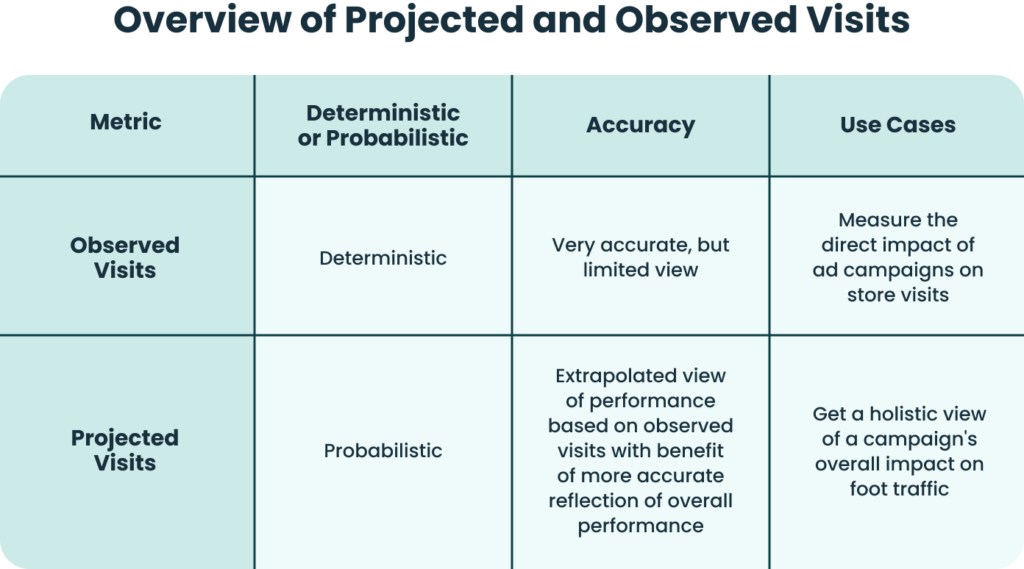GroundTruth’s mission is to turn real-world behaviors into real business results. With our Blueprinting technology, our customers know when an impressed user who was served one of their ads visits their store. They know the direct impact their efforts are making on their most important goals.
But, we wanted to give our customers something more—a more complete picture of their results. For a number of reasons, some technical and some as simple as customers visiting a store without their phone (yes, it does happen), our Observed Visits metric has historically underreported how many visits a campaign drives. That’s why we’re introducing Projected Visits.
How Projected Visits Helps Customers
Advertisers can’t make the best optimization decisions without the best data. Projected Visits is another way to get reliable data on our customers’ campaign performance. We use statistical sampling from our visitation data to provide a high-confidence estimate of real-world visits. Projected Visits captures a holistic view of the impact our customers’ ads have on their real business results.
One of the ways we ensure our customers can use Projected Visits confidently is by implementing campaign requirements in order to measure the Projected Visits. We knew it was important to establish a standard model that could be trusted. We implemented thresholds for impressions and Observed Visits and as long as a campaign hits those thresholds, we have what we need to build a sample and provide a projection.
How do we create the sample? For each campaign, we create a panel of impressed devices with frequent location signals. That panel’s visitation behavior is applied to all the impressed devices to calculate media performance. To be selected for a panel, a user must accurately reflect the characteristics of the larger population and provide frequent location signals.
To put it simply: Projected Visits = (Visitation Rate of Panel Users)* Impressed Users.
How to Think About Projected and Observed Visits
If you’re wondering how to use Projected Visits, especially when you’re also tracking Observed Visits, we totally understand. The main goal of adding Projected Visits is to give you more confidence in your reporting, but we also want to have confidence in the actions you take based on your reporting. So, here’s the best way to use both metrics.
Observed Visits is a direct measurement of people who have visited your store after seeing an ad. These are directly attributed to your ad placements and strategies. But, as we mentioned, they aren’t the whole picture. Under-reporting can happen. And Projected Visits fills in those gaps.
Projected Visits should be used together with Observed Visits to highlight ways to expand your reach and optimize the effectiveness of your ad placements. More information leads to more accurate insights and more real business results.

See Projected Visits In Action
If you want to learn more about Projected Visits and how it can help you make more informed decisions about your ad spending and performance, contact us today. We’ll be more than happy to walk you through all the details.

